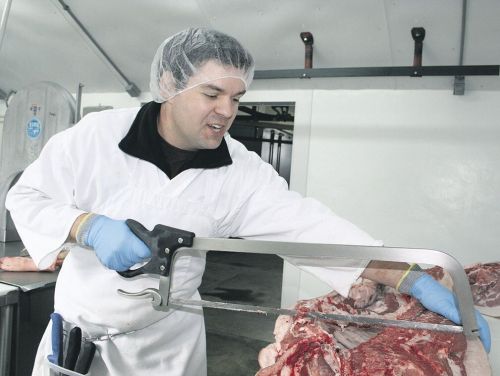$10 million sought to bolster Oregon meat processing facilities
Published 4:00 pm Wednesday, January 25, 2023
SALEM — Oregon’s livestock industry is seeking $10 million in state grant funding to construct and expand slaughter facilities, claiming the demand for such projects far surpasses the $2 million awarded so far.
The increased funding proposed in House Bill 2907 builds upon recent legislative efforts to bolster the state’s meat processing infrastructure, according to supporters.
The strategy gained steam due to the coronavirus pandemic, which broadly disrupted supply chains, but it’s also seen as a way to add value to the state’s livestock industry.
“We’re going to be able to have a craft meat industry while serving quality meat products to the citizens of Oregon,” said Paul Anderes, a Union County commissioner and bill supporter.
The current situation is similar to the rise of microbreweries decades ago, which became possible because the state found ways to overcome regulatory and economic hurdles, he said.
Meat processing is dominated by a handful of large corporations, raising concerns in the livestock industry about anti-competitive practices and bottlenecks in the food supply.
Cattle production is a top agricultural sector in Oregon but the animals are commonly shipped out-of-state for finishing and processing. Beef is then shipped back into the state for sale in retail outlets.
“Those are dollars we are missing out on here in Oregon,” said Todd Nash, president of the Oregon Cattlemen’s Association, during a recent legislative hearing on HB 2907.
Livestock is raised across the state’s vast rural landscape but the options for slaughter are limited if producers want to sell meat locally.
Meat sold at retail or in interstate commerce must be slaughtered at one of only 13 USDA-inspected facilities in Oregon, often requiring livestock to be hauled over long distances.
Another 16 “custom-exempt” facilities also provide slaughter services but the meat is generally only available to the livestock’s owners.
In 2020, lawmakers re-established a state meat inspection program that had been shut down decades earlier.
The idea was to provide additional slaughter alternatives for ranchers who sell meat locally, since meat from state-inspected facilities can be sold at retail throughout Oregon.
Costly upgrades are often needed for custom-exempt facilities to meet the state inspection program’s standards, so lawmakers directed $2 million in grant funding for such improvements in 2021.
Last year, the Oregon Department of Agriculture awarded that money to six out of 44 applications, which had collectively requested $14 million from the agency. Once they’re revamped, those facilities are expected to generate 3 million additional pounds of meat for retail sale in-state.
The number and amount of unfunded grant applications was cited repeatedly during a Jan. 24 meeting of the House Agriculture Committee, which is considering HB 2907.
“The need definitely exists for this further enhancement of funding,” said Curtis Martin, a rancher who raises cattle in Baker and Malheur counties.
Lauren Henderson, ODA’s interim director, said the timing appears to be right for the state meat inspection program, since consumers are receptive and businesses see an opportunity.
“It is not like the field of dreams where you set up a regulatory program and everyone wants to be part of it,” Henderson said.
Bill Hoyt, a rancher from Cottage Grove, Ore., said that improving access to processing is important, but marketing will also be key for Oregon livestock producers.
Major meat processors and distributors are still able to undercut direct marketers on price, so it’s necessary to convince consumers that locally-sourced meat has other benefits, he said.
“What we have to do is sell this to the public,” he said.







